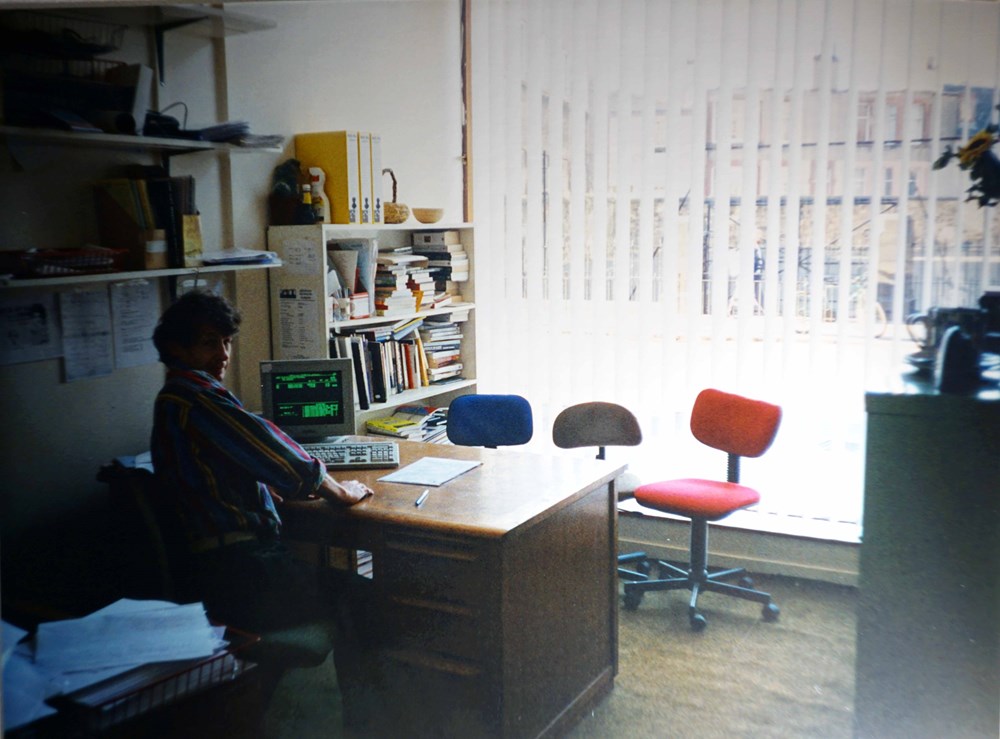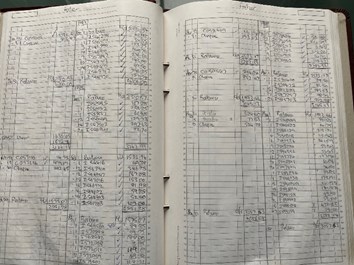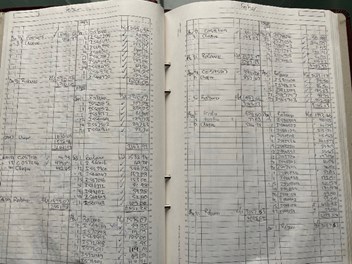How Bookspeed has adopted technology

How Bookspeed has adopted technology
Background
Bookspeed was founded in 1986 by Annie Rhodes & Kingsley Dawson. We are a supplier of bespoke book ranges. Our portfolio of customers ranges from independent businesses and multi-site national companies to heritage attractions and other specialist retail sectors. Over the past 35 years technology has dramatically changed how we live.
In this blog post we look at how Bookspeed has evolved and kept up with the pace of change technology has brought to the business world. Originally Bookspeed was set up as a traditional wholesale business with sales agents out on the road visiting customers and taking orders in person. Indeed, the first 15 years saw Bookspeed build its footprint across Scotland establishing itself as the leading suppliers to the heritage and visitor markets North of the border.
The Early Days

Business transactions were significantly different back in 1986 when Bookspeed was born and almost exclusively paper based.
Here are some of the old ledgers we have with us at Bookspeed from our first few years:


Back in the mid-80s computer-based transactions were in the very early stages of development (fun fact: 1985 was when the first dot com domain was registered!)
Bookspeed has come a long way from our first days of travelling sales representatives with large, heavy folders of paper sales kits and noisy matrix printers in our office. Like all modern businesses, we have become used to working with interconnected systems, fast broadband, and hardware that put all of this computer power in the palm of our hands. Since the early 2010’s Bookspeed has focused on investing in technology to deliver the best possible customer experience, but it didn’t happen overnight!
Bookspeed’s first computer system was implemented in the early 1990’s. It was an MS-DOS based system that at the time was cutting edge! This system remained in place until 2011 when a (long overdue!) upgrade took place that saw Bookspeed move onto a modern Enterprise Resource Planning system from Microsoft Dynamics. This upgrade, that dragged Bookspeed from the 90s into the 21st century, provided the foundations for the company to profitably scale the business while making sure everyone had the tools the needed to do their best work in the business.
Our Technology Timeline
- 1991 – Bookspeed installs its first computer system called Sweetens, a book-trade specific MS-DOS based program.
- Late 90’s– Bookspeed implements Sage as it’s accounting software, unfortunately back then there wasn’t a way to integrate Sage and Sweetens so there were lots of manual workarounds!
- 2011 – Bookspeed upgrades to Microsoft Dynamics Navision (NAV).
- 2013 – Bookspeed launches an integrated transactional website that allows customers to manage their range, explore new titles, and reorder bestsellers at their own leisure.
- 2016 – Bookspeed upgrades NAV to a version that will accommodate a more sophisticated warehouse management system.
- 2017 – Bookspeed opens a second warehouse, which without the technological investment over the previous years would have been almost impossible to do.
- 2018 – Bookspeed launches an integrated iPad app that lets salespeople at trade shows to take orders from books on our stand, whilst also accessing the c.50,000 books we have on our system.
- 2020 – Bookspeed planned to upgrade NAV again, but the pandemic hit which put these plans on ice!
- 2022 – Bookspeed will complete the upgrade of NAV after the covid-delay. This will see Bookspeed leveraging some of the most cutting-edge enterprise solutions Microsoft have available.
Bookspeed ambition with its technology is to automate as much of the mundane as possible, so that Bookspeed-ers can focus on the work that only humans can do. Our technologies should be a tool that help us do our jobs more effectively and efficiently and enhance the human experience we have of working with our colleagues, customers, and suppliers.
These investments certainly supported the business in early 2020 as the pandemic meant we needed to transition to more home working. Within the space of 10 days out IT Manager was able to set up all 25 of our office-based colleagues to be able to work from home with access to all the tools and systems they would normally have. Crucially, it allowed us to stay connected to each other through what, for many, was a scary and quite lonely period. We use Microsoft Teams for all our internal communications, and while we’re very much looking forward to being able to all work in person again, the use of this platform will stay with us going forward to ensure connectivity in what will be a new and more hybrid working model.
What none of us could have predicted is quite how much communication can be done via the medium of memes! So much so, we’re a little concerned some of our colleagues may not even remember how to express themselves without them in the future!




